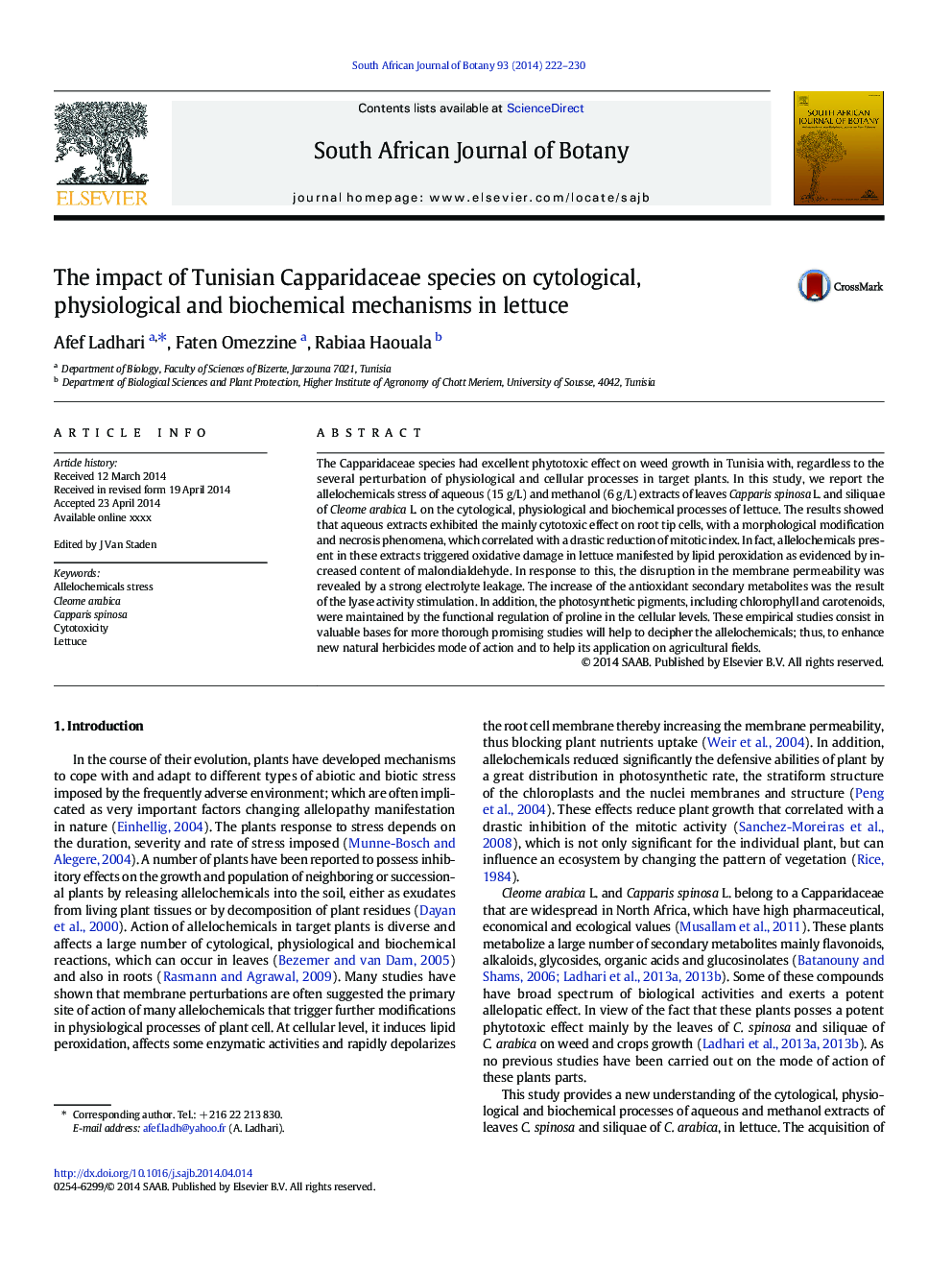| Article ID | Journal | Published Year | Pages | File Type |
|---|---|---|---|---|
| 6378957 | South African Journal of Botany | 2014 | 9 Pages |
Abstract
The Capparidaceae species had excellent phytotoxic effect on weed growth in Tunisia with, regardless to the several perturbation of physiological and cellular processes in target plants. In this study, we report the allelochemicals stress of aqueous (15Â g/L) and methanol (6Â g/L) extracts of leaves Capparis spinosa L. and siliquae of Cleome arabica L. on the cytological, physiological and biochemical processes of lettuce. The results showed that aqueous extracts exhibited the mainly cytotoxic effect on root tip cells, with a morphological modification and necrosis phenomena, which correlated with a drastic reduction of mitotic index. In fact, allelochemicals present in these extracts triggered oxidative damage in lettuce manifested by lipid peroxidation as evidenced by increased content of malondialdehyde. In response to this, the disruption in the membrane permeability was revealed by a strong electrolyte leakage. The increase of the antioxidant secondary metabolites was the result of the lyase activity stimulation. In addition, the photosynthetic pigments, including chlorophyll and carotenoids, were maintained by the functional regulation of proline in the cellular levels. These empirical studies consist in valuable bases for more thorough promising studies will help to decipher the allelochemicals; thus, to enhance new natural herbicides mode of action and to help its application on agricultural fields.
Keywords
Related Topics
Life Sciences
Agricultural and Biological Sciences
Agronomy and Crop Science
Authors
Afef Ladhari, Faten Omezzine, Rabiaa Haouala,
